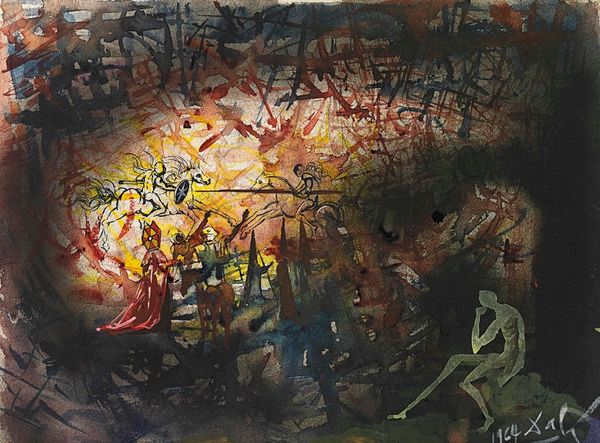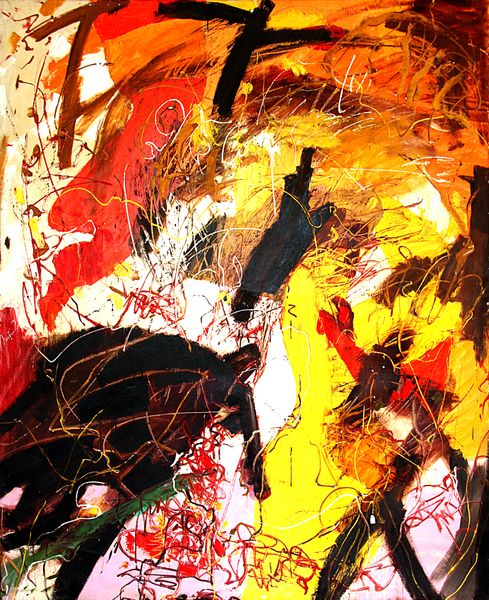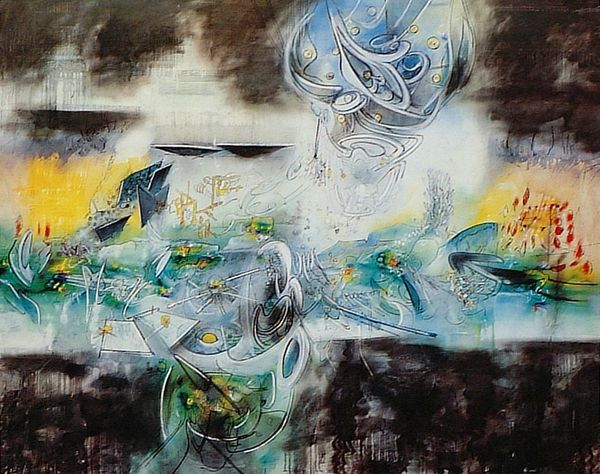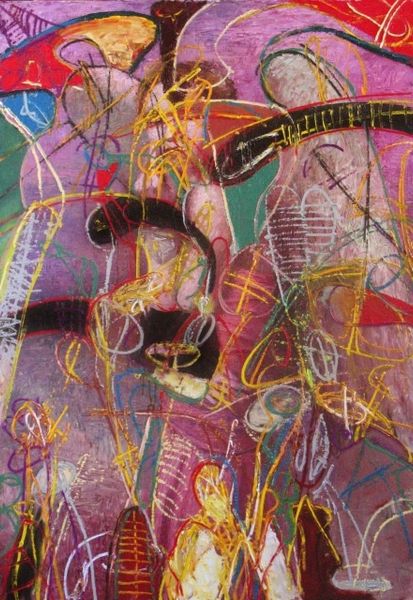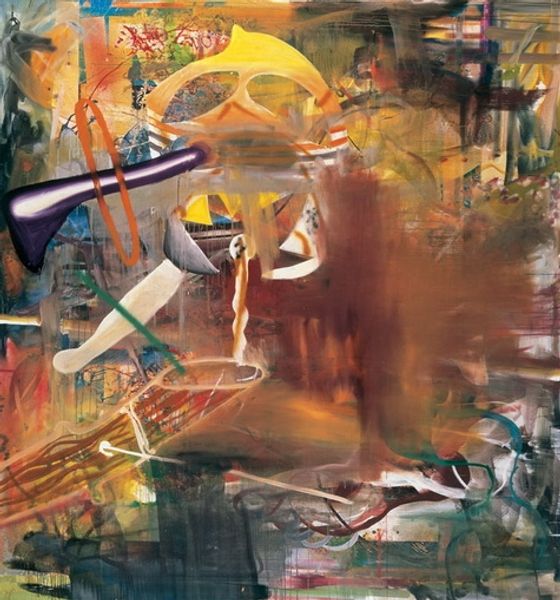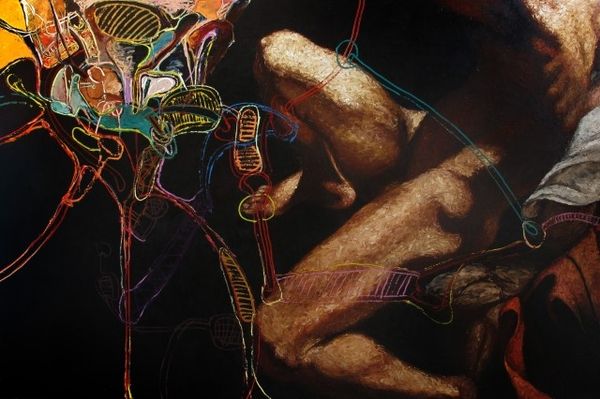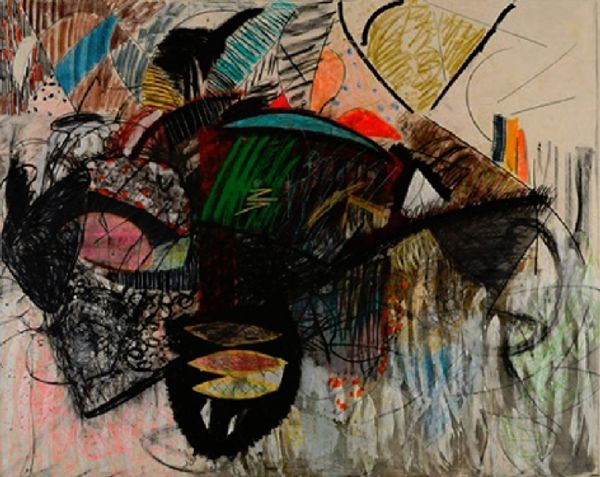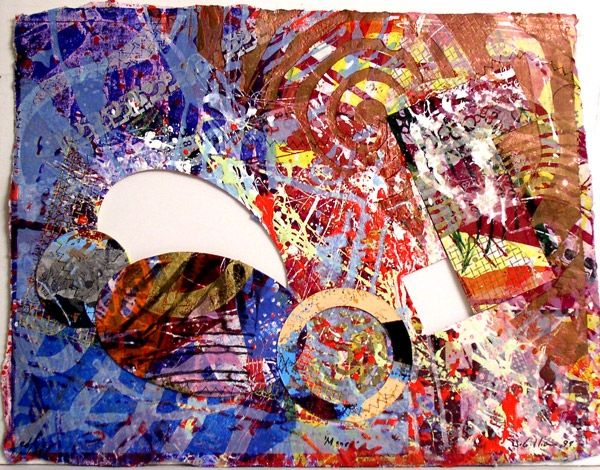
painting, acrylic-paint
#
painting
#
graffiti art
#
impressionist painting style
#
landscape
#
impressionist landscape
#
acrylic-paint
#
figuration
#
neo expressionist
#
acrylic on canvas
#
expressionism
#
expressionist
Copyright: Charles Blackman,Fair Use
Editor: Here we have Charles Blackman's "Fern Garden No. 2," created using acrylic paint. It strikes me as quite wild and dense, almost claustrophobic. What catches your eye when you look at this piece? Curator: Well, immediately I'm drawn to the application of the acrylic. The layers of paint are visibly built up, almost like a low-relief sculpture. Consider the labor involved in layering those colors, particularly when we look at the context of post-war Australia. Do you think that's decorative, or perhaps reflective of the materials that were easily available to the artist? Editor: That's interesting; I hadn't thought about it in terms of material scarcity. I was just seeing it as expressive brushwork, but you are right –the physicality of the paint itself becomes significant if we think about the artist's immediate environment. The abundance of ferns against that consideration almost feels defiant. Curator: Exactly! Blackman lived through periods of economic restructuring. His choices of acrylic, a relatively new and accessible material, connects him to a specific moment in production and consumption. How does this shift your understanding of the garden as a subject? Editor: It makes me reconsider what a garden represents. Beyond a romantic notion of nature, it seems to be a testament to labor, resources, and a very particular socio-economic climate that is accessible and available to work with. Curator: Precisely. It’s a fascinating example of how examining the material conditions can illuminate the meaning of an artwork, don't you think? Editor: Absolutely. Seeing beyond the surface to the context of materials gives it a much richer narrative. Thanks so much for offering this new lens to view the artwork!
Comments
No comments
Be the first to comment and join the conversation on the ultimate creative platform.
